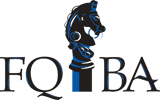New FOG (Fats, Oil and Grease) Ordinance in Section 16.5 of the Plumbing Code
In February 2016, the Sewerage & Water Board of New Orleans updated the plumbing code specifically relating to rules governing discharge into the public sewerage system from grease traps and grease interceptors. S&WB also outlined the new FOG (Fats, Oil and Grease) ordinance in Section 16.5 of the Plumbing Code. The change in regulations was made to reduce sanitary sewer overflows in the collection system. The majority of sewer overflows are caused by obstructions in the collection system and grease causes most of those obstructions.
Traditionally, municipalities issued discharge permits and sampled the discharge from the grease-trap to determine if a facility was in compliance. The FOG program is a means to regulate discharges to the sanitary sewer by the use of Best Management Practices (BMPs). The intent of the changes to the Plumbing Code is to make food service facilities aware of the function of their grease-trap and grease-interceptors. It also will require the food service facility owner and/or manager to properly maintain their trap. This is done by having it pumped or cleaned by a grease-trap cleaning company. The trap must be inspected on an annual basis by a licensed plumber to ensure it works properly.
Key points of the regulations are found below:
1) The new fats, oil and grease daily discharge maximum of 100 mg/ltr (which was reduced from 250 mg/ltr max).
2) All food service establishments that discharge waste containing fats, oils or grease must obtain a FOG discharge permit, install and maintain a grease trap or grease interceptor.
3) Pump out grease trap/interceptor a minimum of once per 90 days and within two working days whenever 25 percent or more of the design capacity of the interceptor, measured from the bottom of the device to the invert of the outlet pipe, contains floating materials, sediment, fats, oils, or grease.
4) For each interceptor that has a capacity greater than 100 gallons, a liquid waste hauler permitted by the SWBNO to collect, transport and dispose of liquid waste must be hired to dispose the waste at a facility authorized and permitted to receive the disposal waste.
5) All property owners shall maintain cleaning and pumping receipt records that include the date and time grease interceptor was cleaned, quantity of grease and materials removed, company or qualified agent providing services and shall be maintained on-site for three years. Copies of cleaning records shall be submitted by the grease trap cleaning company monthly to the SWBNO. Reports shall be due by the 15th day of the previous calendar month and must be submitted by fax or US mail.
6) Interceptor inspection by a licensed plumber must be done once per year and shall make a visual observation of and take photographs of inlet and outlet fittings, internal baffles, walls, floor and all other internal structures. They must provide a written report of the inspection to the food service establishment or food preparation establishment of the report and photographs and provide the name, address and telephone number of the licensed plumber or qualified professional approved by the SWMNO conducting the inspection, the date of inspection, and a description of any defects observed. A copy of the report must be sent to the SWBNO. All interceptor defects shall be corrected within 90 days of each inspection.
For more detailed information, please see Section 16.5 February 2016, Plumbing Code Section 16 revised Feb 2016, Changes to Plumbing Code 2016, 2015 Restaurant Permit Application and Instructions or visit http://www.swbno.org/environmental_pretreatment.asp.
If you have any further questions please contact Peter Brown at 942-3856 or PB****@***no.org
